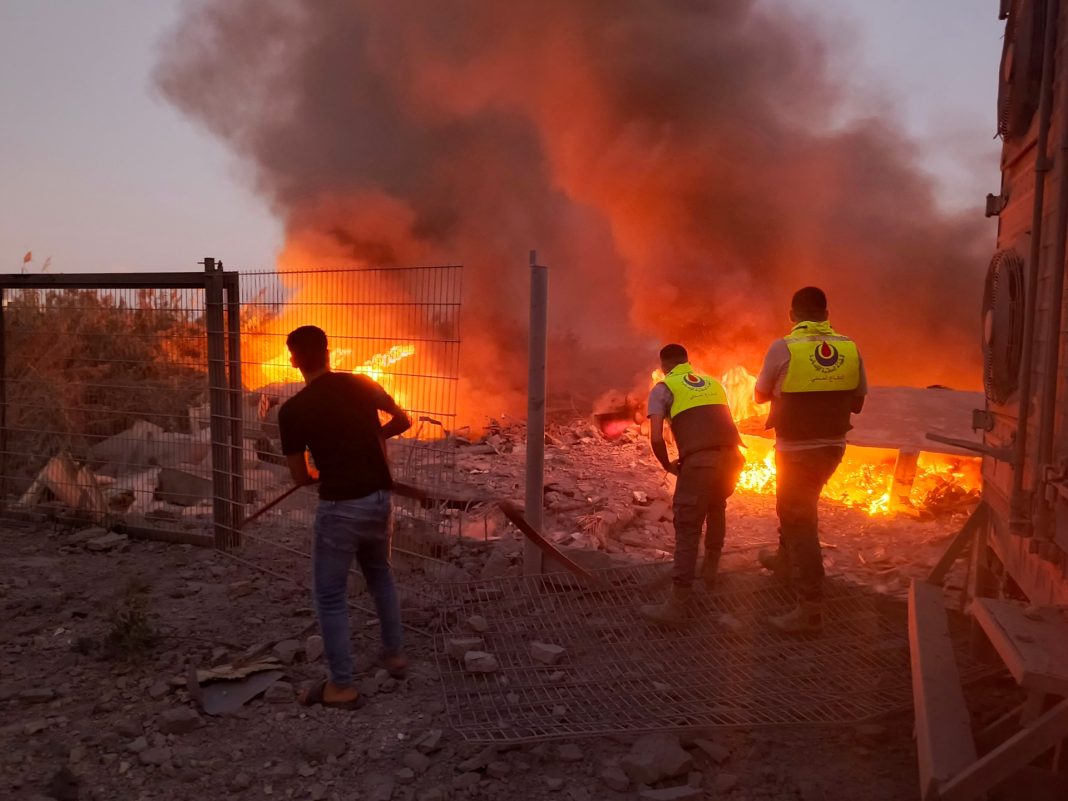United Nations Secretary-General Antonio Guterres has been clear, telling a press conference that the world “cannot afford Lebanon to become another Gaza”.
Many prominent Israeli figures seem to want exactly that, however, drawing straight lines between Hamas in Gaza and Hezbollah in Lebanon to underscore the threat they pose and justify assaults on Gaza and Lebanon.
So, are Hamas and Hezbollah the same?
Not even a bit.
In Lebanon, Hezbollah is part of a wider tapestry of the political and military mosaic. While it plays a prominent role in the country, it does not have control over the presidency or parliament.
Unlike Gaza, Lebanon is present in international systems of governance and finance. Gaza and Hamas’s links with the international order are primarily via aid provided by organisations like the UN.
Hamas, which has an effective military wing like Hezbollah, governs Gaza completely and has to maintain a functioning society and governing structure.
Aren’t they both ‘Iranian proxies’?
They’re allies, yes.
Israel has portrayed them as equal extensions of what is typically cast as Israel’s ultimate foe: Iran.
Addressing the United States Congress in July, Israeli Prime Minister Benjamin Netanyahu said Iran was behind everything and that its “proxy” forces – Hamas, Hezbollah and the Houthis in Yemen – pose an equal threat to Israel and, by extension, the West.
Both groups maintain strong alliances with Iran, but they are distinct from each other, and their relationship with Iran changes.
Hezbollah is more aligned with Iran’s regional goals, while Hamas utilises Iranian support but is more independent.
Hamas broke with Iran for three years in 2011 over its support for Syrian President Bashar al-Assad, and it does not seem to have forewarned Iran of its October 7 attack on Israel.
But they said both groups use human shields?
To justify its widespread targeting of civilian areas, Israel has accused both Hamas and Hezbollah of “hiding” their military hardware there.
Israel claims Hamas hides in or near schools, hospitals and homes as it tries to justify the destruction of Gaza.
It also claims Hamas uses UN facilities in Gaza as military fronts “in contravention of the Geneva Convention”.
Israel has also targeted the United Nations Relief and Works Agency for Palestine Refugees (UNRWA) – the only support for Palestinian refugee populations displaced in the ethnic cleansing of 1948’s Nakba by Zionist gangs.
Recently, Israel made similar claims about homes in southern Israel – that they are being used by Hezbollah.
On Monday, Israel released images of what it said was a Hezbollah missile concealed in an attic in southern Lebanon, appearing to be trying to pre-empt criticism of its ongoing strikes.
Pointing to an image, an Israeli military spokesperson said, “It’s ready to launch from an opening in the roof.
“Under the attic, on the first floor, a Lebanese family lives, serving as a human shield.”
At the time of writing, Israel has carried out thousands of strikes on homes across Lebanon.
But what about civilians?
In Gaza, Israel has shown little concern for fatalities – bombing homes, displacement camps, hospitals and schools.
In Lebanon, Israel sent opaque “evacuation notices” to the citizens of a foreign country ahead of strikes on targets the people may not know are nearby.
The paper notices, text messages and recorded phone calls were cited by Israel as “evidence” that it is trying to avoid civilian casualties.
During a visit to a military base on Tuesday, Netanyahu told the people of Lebanon “our war is not with you; our war is with Hezbollah”, urging the Lebanese people to rise up against the group.
At the time of writing, more than 600 people in Lebanon have been killed in the ongoing Israeli strikes and more than 2,000 injured.
Are people in Lebanon displaced as in Gaza?
Yes.
In an echo of the attack on Gaza, thousands of terrified Lebanese families have fled southern Lebanon, joining an estimated 110,000 people who fled earlier, seeking shelter wherever possible.
The total number of displaced is about 500,000 now, Lebanon’s Foreign Minister Abdallah Bou Habib said on Tuesday.
Some are seeking shelter in Palestinian refugee camps in southern Beirut like Shatila – camps that have housed Palestinians fleeing Israeli attacks since the 1940s.
Others are cramming into bomb shelters, sleeping in cars, or crowding into Beirut’s schools, which, unlike the UNRWA-operated schools in Gaza, were never designed to double as shelters.
If they’re so different, why are Israel’s tactics the same?
Because Israel needs a quick end and thinks this will work, said Yousef Munayyer from the Arab Center Washington DC.
In Gaza, Hamas survived a year of Israeli attacks by relying on its tunnel network.
Hezbollah says it has an expansive network of tunnels in Lebanon with extensive munitions in them, as shown in video it released in August.
Israel would struggle more in Lebanon, not least because Hezbollah is stronger.
“And so they’re using the same sort of tactics that they used in Gaza,” Munayyer said. “This is part of an Israeli strategy aimed at bringing great pressure on Hezbollah.”
He said Israel hoped to “get out of the situation without a ground invasion, without a long drawn-out battle” – and to avoid getting bogged down in Lebanon just as it has in Gaza.


